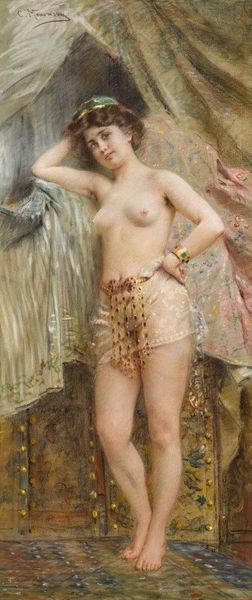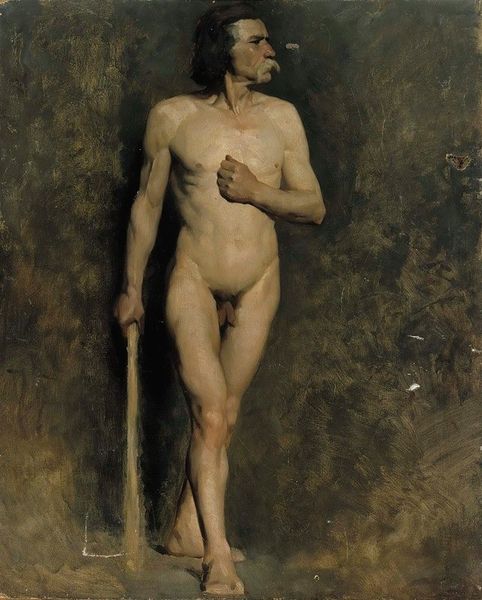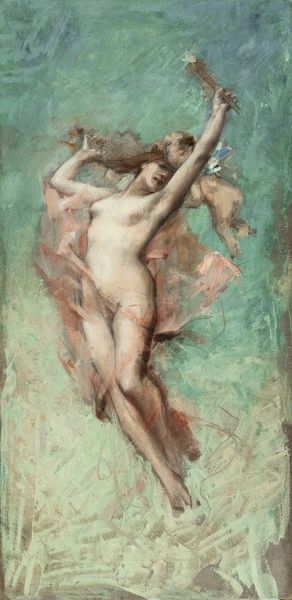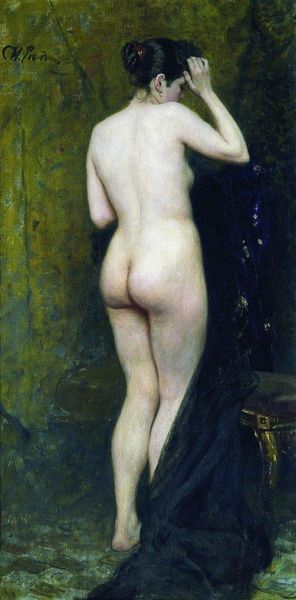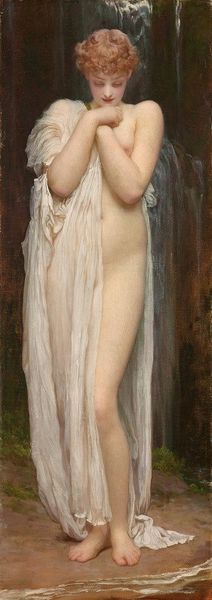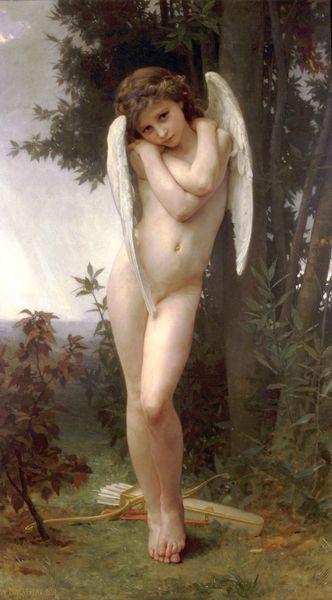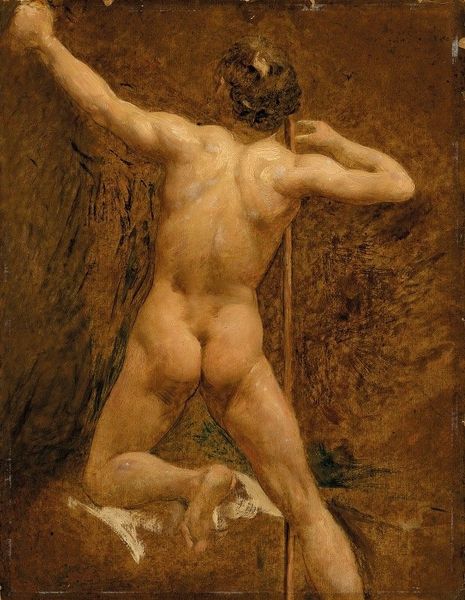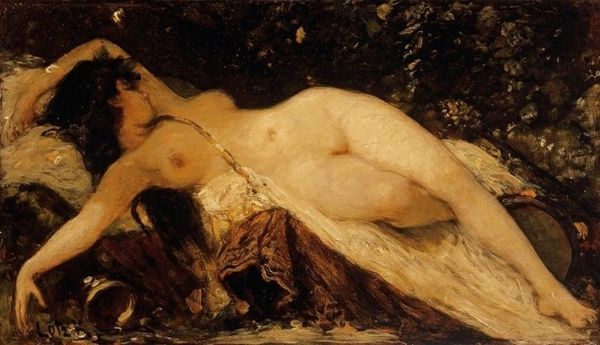
painting, oil-paint
#
portrait
#
painting
#
oil-paint
#
figuration
#
oil painting
#
romanticism
#
mythology
#
painting painterly
#
academic-art
#
nude
#
portrait art
Copyright: Public Domain: Artvee
Curator: Here we have Frederic Leighton's depiction of "Pan". A painting executed in the late 19th century that beautifully showcases the romantic idealization of classical mythology, doesn't it? Editor: It certainly exudes a serene sensuality. The textures seem so tactile—the way light catches the skin, the drape of that cloth... it begs to be touched. What medium is Leighton employing here? Curator: Oil paint, skillfully layered. You know, Leighton, as president of the Royal Academy, significantly shaped Victorian artistic taste. This portrayal of Pan aligns perfectly with the era's interest in portraying idealized, almost staged versions of classical subjects. He clearly positions Pan as an approachable, beautiful being rather than the frightening half-goat. Editor: And observe the setting itself. The painting technique brings almost to life the lush leaves. But there is this rather striking juxtaposition between the deity's idealized figure and the humble arrangement of what look to be squashes on the forest floor. I wonder, what meaning Leighton would infuse to this odd staging choice of natural props and his own deity. Curator: Perhaps it highlights Pan's connection to nature, portraying him as part of the landscape rather than detached divinity? In the 19th century, we saw renewed interest in mythology to discuss morality in an artistic safe setting, you know? It let them have discussions on philosophy and meaning with the allowance of nudity. Editor: I see how it’s about finding some safety to push boundaries. The figure, though sensual and alluring, remains somehow... confined. Almost trapped to its position like a specimen. Curator: That is certainly something to consider. What's more compelling, however, is the painting's lasting influence on how we visualize mythology, isn't it? It's through works like this that Pan maintains a role within the wider cultural consciousness. Editor: For me, I can't get past that tension between desire and what could almost be called a state of entrapment. Ultimately it's those tactile layers of paint that bring such a contradictory work of art together in my eyes.
Comments
No comments
Be the first to comment and join the conversation on the ultimate creative platform.


